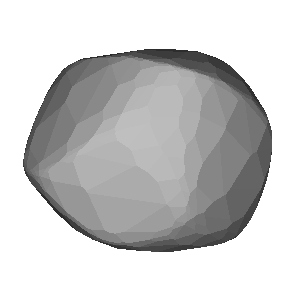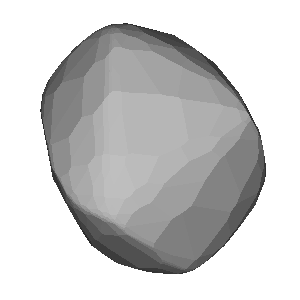2025-02-03 / UCAC4 547-003491 / (109) Felicitas
| # | OBS | Observer | Occ | Meth. | Instr. | CC | TSRC | UT1 | UT2 | UT3 | UT4 | UT2E | UT3E | Dur. | Chrd |
|---|---|---|---|---|---|---|---|---|---|---|---|---|---|---|---|
| 1 | show | Alberto Ossola | O+ | VID | M230 | CH | GPS | 20:30:02 | 20:31:18.48 | 20:31:20.24 | 20:32:34 | 0.08 | 0.08 | 1.76 | 47.9 |
| 2 | show | Andrea Manna | O+ | VID | M200 | CH | GPS | 20:28:47 | 20:31:17.76 | 20:31:20.95 | 20:34:28 | 0.06 | 0.06 | 3.19 | 86.8 |
| 3 | show | Stefano Sposetti | O+ | VID | M280 | CH | GPS | 20:31:15 | 20:31:17.77 | 20:31:21.17 | 20:34:30 | 0.10 | 0.10 | 3.40 | 92.5 |
| 4 | show | Stefano Sposetti | O+ | VID | M200 | CH | GPS | 20:26:45 | 20:31:17.93 | 20:31:21.31 | 20:33:30 | 0.08 | 0.10 | 3.38 | 91.9 |
4 observations found in db: sodis
Available (probably) matching predictions (click on the link to switch):| JPL#66 : cc9f12c0-8536-11ef-78cd-0a718e8ba72d [db: asteroids] |
Using prediction cc9f12c0-8536-11ef-78cd-0a718e8ba72d for map and profile fit
| Ellipse and circular profile fits to the timings (chords) |
|---|
|
|
Auto-Fit Result: Size = 94 x 62 km a',b' = 46.9, 30.9 km X0,Y0 = 748.0, 25.9 km Mean diameter = 76 km From 4 chords (VID) You can enter space separated chord numbers (example: 11 4 8) or a method like VIS to ignore all visual timings, or a time source like RAD and NTP (but not GPS). If the plot disappears, then there are less than 2 chords left (too much ignored, go back with browser). Check SiMDA for size and mass data. Check Johnston Archive for satellites. |
Sky projection (artificial light) for occ. time: 2025-02-03, 20:30 UT (JD = 2460710.354)
| DAMIT | Q | P (h) | λ, β | JD0 | JD-JD0 | φ0 | Version | Modified | Vol-equiv D | Cmnt |
|---|---|---|---|---|---|---|---|---|---|---|
| # 3096 | 3.0 | 13.191 | 252°, -49° | 2.444586e6 | 16124.4 | 0.0° | None | 2019-06-25 | 81.0 +/- None km | 2019-06-24 |
| # 3097 | 3.0 | 13.191 | 77°, -26° | 2.444586e6 | 16124.4 | 0.0° | None | 2019-06-25 | 85.0 +/- 6.0 km | 2019-06-24 |


Image size: 300px. Transparent image background for copy & paste
| Map with groundtrack and observer stations |
|---|
| Event Details |
|---|
Occultation UUID [and DB] : cc9f12c0-8536-11ef-78cd-0a718e8ba72d [asteroids] Occultation Date + Time : 2025-02-03 at 20:28:17 UT +/- 0.0 min [1] Object Designation : (109) Felicitas Orbit Class : MBA Star Designation : GDR3 0092305311117391232 Star Coordinates (ICRF) : RA = 01 53 05.4082, DE = +19 13 58.087 [2] Star Magnitudes : G = 12.04 mag, RP = 11.53 mag, BP = 12.38 mag Object Magnitude : V = 13.21 mag Estimated Magnitude Drop : 1.5 mag Estimated Max. Duration : 3.3 sec Object Mean Diameter : 89.4 km (src: astorb) Speed of the shadow : 27.2 km/s Elongation to Moon & Sun : 9° (sunlit = 33%), Sun = 78° Cross-track uncertainty : 3.0 mas = 3 km = 0.04 path-width (1-sig) RUWE and duplicate source : 1.24 mas, dup.src = 0 (0:false, 1:true) Ephemeris Reference : JPL#66 [1] time t0 of closest geocentric approach c/a, [2] including proper motion until t0 |
| More Data and Informations |
|---|
(If error 404: link not valid which means no data available)
| Aladin Sky Atlas |
|---|
| Aladin Lite direct link (has Gaia overlay) |












